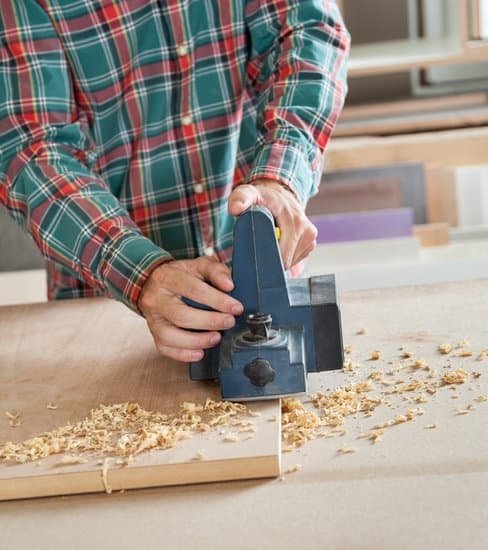Are you looking to add a personal touch to your home decor? The trend of do it yourself woodworking wall shelf projects has been on the rise, allowing individuals to create custom pieces that perfectly suit their space. With the right materials, tools, and guidance, you can embark on a satisfying woodworking journey and craft a beautiful wall shelf for your home.
The appeal of DIY woodworking projects lies in the ability to customize and create unique pieces that reflect your personal style. Building a wall shelf from scratch allows you to choose the type of wood, design, and finish that best complements your existing decor. Whether you prefer a modern, rustic, or minimalist style, there are endless design options to explore when it comes to crafting a woodworking wall shelf.
In this article, we will provide you with step-by-step instructions on how to create your own wall shelf, as well as tips for selecting the right materials and tools. From measuring and cutting the wood to hanging and mounting the finished product, we will guide you through the entire process so that you can proudly display your handmade creation in your home.
Materials and Tools Needed
When it comes to embarking on a do it yourself woodworking wall shelf project, having the right materials and tools is crucial for success. For beginners, starting with simple and affordable options is recommended to avoid feeling overwhelmed. Wood options such as pine or poplar are readily available and easy to work with, making them ideal choices for those new to woodworking. Additionally, basic hardware such as screws, brackets, and anchors will be necessary for assembly and mounting.
As for tools, a few essentials include a saw for cutting the wood to size, a drill for creating holes and attaching hardware, and sandpaper for smoothing out rough edges. For beginners who may not have access to a wide array of tools, there are many hardware stores that offer tool rental services, allowing individuals to complete their project without investing in expensive equipment.
Ultimately, the key to success in this DIY woodworking endeavor lies in careful planning and preparation when it comes to selecting the right materials and tools. By starting with simple options and gradually building skills and confidence, beginners can create a beautiful wall shelf that adds both function and style to their home.
Design Inspiration
When it comes to creating a do it yourself woodworking wall shelf, the design options are endless. Whether you prefer a modern, rustic, or minimalist style, there are countless ways to customize your wall shelf to suit your home decor. Here are some design inspirations to consider for your woodworking project:
- Modern Style: If you gravitate towards sleek lines and clean finishes, a modern wall shelf may be the perfect fit for your space. Consider using materials like maple or walnut wood for a contemporary look, and opt for simple, minimalist hardware to complement the design.
- Rustic Style: For a more cozy and rustic feel, you can create a wall shelf using reclaimed wood or distressed lumber. Embrace imperfections and natural textures to achieve that charming, weathered look that’s characteristic of rustic decor.
- Minimalist Style: If simplicity is key in your home decor, a minimalist wall shelf might be just what you need. Choose light-colored woods like beech or ash and focus on clean, understated design elements to keep the look effortless and uncluttered.
No matter which style you choose for your do it yourself woodworking wall shelf project, there are endless opportunities to express your creativity and tailor the design to reflect your personal taste.
Remember that these design inspirations serve as starting points; feel free to combine elements from different styles or add your own unique twist to create a one-of-a-kind wall shelf that perfectly complements your living space. With the right materials, tools, and a bit of imagination, the possibilities are truly endless.
Step-by-Step Instructions
The first step in creating a do it yourself woodworking wall shelf is to measure and cut the wood pieces according to your desired dimensions. It is essential to use a measuring tape and a straight edge to ensure accuracy. Once the measurements are finalized, you can use a saw to carefully cut the wood pieces to size. Beginners may opt for pre-cut wood pieces from a hardware store to simplify this process.
After cutting the wood pieces, sanding is crucial to achieve a smooth and polished finish. Use coarse sandpaper initially to remove any rough edges or imperfections, then switch to finer sandpaper for a more refined surface. It is important to sand both the front and back of each wood piece, as well as the edges, for a professional look.
Assembling the wall shelf involves connecting the individual wood pieces together using screws, nails, or wood glue. Depending on the chosen design and style, you may need to carefully align the pieces before securing them in place. This step requires precision and attention to detail, as it will determine the overall stability and appearance of the finished wall shelf.
| Do It Yourself Woodworking Wall Shelf | Step-by-Step Instructions |
|---|---|
| Measuring & Cutting Wood | Use a measuring tape and straight edge for accuracy; Consider pre-cut wood options for beginners |
| Sanding Process | Utilize coarse sandpaper followed by finer sandpaper for a polished finish; Ensure all surfaces are smooth |
| Assembling Pieces | Connect wood pieces using screws, nails, or glue; Pay attention to alignment for stability and aesthetics |
By following these step-by-step instructions, individuals can create their own custom wall shelf through do it yourself woodworking. Taking time and care during each stage of the process will lead to a high-quality and personalized result that adds both functionality and aesthetic appeal to any space within their home.
Tips for Staining and Finishing
Staining and finishing are crucial steps in the process of creating a DIY woodworking wall shelf. The right stain or finish can enhance the natural beauty of the wood and protect it from wear and tear, ensuring that your wall shelf remains durable and visually appealing for years to come.
When it comes to choosing a stain or finish, there are several factors to consider, including the type of wood you are using, the desired color or tone, and your personal preferences.
For beginners embarking on their first do it yourself woodworking wall shelf project, water-based stains are often recommended for their ease of use and quick drying time. These stains also offer a wide range of color options and can be easily cleaned up with soap and water. Additionally, they emit fewer fumes compared to oil-based stains, making them a more user-friendly option for those working in a home workshop or garage.
When it comes to finishing the wood, polyurethane is a popular choice for its durability and protective properties. Available in both oil-based and water-based formulas, polyurethane creates a hard, glossy finish that is resistant to scratches and moisture. For a more natural look, however, many DIY enthusiasts opt for simpler finishes such as tung oil or beeswax, which provide a subtle sheen while still protecting the wood.
It’s important to apply stain or finish in a well-ventilated area and follow the manufacturer’s instructions carefully to achieve professional-looking results. Taking the time to properly prepare and finish your wall shelf will not only enhance its appearance but also ensure that it withstands everyday use in your home.
Hanging and Mounting
When it comes to creating a do it yourself woodworking wall shelf, one of the most critical steps is hanging and mounting the finished product. Without proper installation, even the most beautifully crafted shelf can pose a safety hazard or risk damage to your wall. In this section, we will discuss the essential steps and considerations for securely hanging and mounting your DIY wall shelf.
Choosing the Right Hardware
The first step in hanging your woodworking wall shelf is selecting the appropriate hardware for mounting. Depending on the weight and size of your shelf, you may need to use heavy-duty brackets, anchors, or screws. It’s crucial to consider both the weight capacity of the hardware and the type of wall you’ll be mounting the shelf on – drywall, plaster, or wood all require different fastening methods.
Measuring and Marking
Before drilling any holes or driving any screws, take precise measurements and mark where you want to position your shelf on the wall. Using a level and a pencil, outline where the brackets or mounting points will go and verify that everything is properly aligned before proceeding with installation. This extra attention to detail during this step will ensure that your finished shelf looks professional and is structurally sound.
Securing the Shelf
Once you have identified where your shelf will be mounted and prepared the area with accurate measurements and markings, it’s time to attach it securely. Always follow manufacturer’s instructions for using specific brackets or hardware. Be sure to double-check that everything is level as you’re securing each bracket or mounting point in place. After attaching all components securely, test for stability by gently placing weighted objects on the shelf before fully loading it with items.
By carefully following these steps for hanging and mounting your do it yourself woodworking wall shelf, you can ensure that it not only adds functionality but also enhances visual appeal to any room in your home. With proper planning and attention to detail during this phase of construction, you can proudly display your DIY creation for years to come.
Customization Options
When it comes to creating a custom wall shelf through do it yourself woodworking, the options for personalization are endless. Adding decorative accents can give your project a unique and personalized touch that reflects your style and enhances the functionality of the shelf. There are plenty of ways to customize your wall shelf, from adding hooks and knobs to incorporating embellishments that highlight the overall design.
Adding Hooks and Knobs
One popular way to customize a woodworking wall shelf is by adding hooks or knobs. This not only adds visual interest but also increases the shelf’s functionality. For example, adding sturdy hooks to the bottom of the shelf can create a space for hanging items such as keys, hats, or small bags. Similarly, attaching decorative knobs to the front of the shelf can serve both a practical purpose and add a stylish element to the overall design.
Incorporating Embellishments
Another way to personalize your DIY woodworking wall shelf is by incorporating various embellishments. This could include using wood trim or moldings to add detail and visual appeal to the edges of the shelf. Additionally, you might consider adding decorative elements such as wood carvings, stenciled designs, or even painted accents to give the shelf a unique and customized look.
Stenciling or Painting
For those who want to take customization a step further, stenciling or painting designs onto the surface of the wall shelf can be an excellent way to personalize it. Whether you opt for intricate patterns, geometric shapes, or simple monochrome colors, incorporating stenciling or painting allows you to make your wall shelf truly one-of-a-kind. This level of personalization not only adds visual interest but also allows you to match the shelf with existing decor in your home.
Showcasing the Final Product
In conclusion, creating a do-it-yourself woodworking wall shelf can be a rewarding and satisfying project for anyone with an interest in woodworking. Not only does it allow you to customize the design to perfectly suit your space and style, but it also gives you the opportunity to showcase your craftsmanship and creativity. By following the step-by-step instructions provided in this guide, even beginners can successfully create a beautiful and functional wall shelf for their home.
After completing the construction of your woodworking wall shelf, take pride in proudly displaying your finished product in your home. Whether you’ve opted for a modern, rustic, or minimalist design, the effort and care put into crafting this piece will surely shine through. Additionally, consider sharing your DIY woodworking success story with others. Posting photos of your completed project on social media or discussing it in DIY woodworking communities can inspire and motivate others to try similar projects.
The satisfaction of completing a do-it-yourself woodworking wall shelf goes beyond just having a new piece of furniture. It provides a sense of accomplishment and pride knowing that you were able to create something beautiful and practical with your own hands. We encourage you to take on this project, no matter your skill level. With the right materials, tools, and dedication, you can create a stunning wall shelf that adds both functionality and personality to your home.
Frequently Asked Questions
How Do You Make a Simple Wooden Wall Shelf?
Making a simple wooden wall shelf can be done by cutting the wood to the desired length, sanding it smooth, and then assembling the pieces using wood glue and screws. It’s important to ensure that the shelf is level when mounting it on the wall.
What Kind of Wood Is Used for Wall Shelves?
Various types of wood can be used for wall shelves, depending on the desired aesthetic and strength requirements. Common options include pine, oak, cedar, and walnut. Each type of wood has its own unique grain patterns and color variations.
Can You Use 2×4 for Floating Shelves?
Yes, 2×4 lumber can be used for floating shelves as long as it is properly prepared and finished. The key is to ensure that the lumber is strong enough to support the weight of the items placed on the shelf without bowing or breaking. Proper mounting hardware is also essential for stability.

Hi everyone! I’m a woodworker and blogger, and this is my woodworking blog. In my blog, I share tips and tricks for woodworkers of all skill levels, as well as project ideas that you can try yourself.





